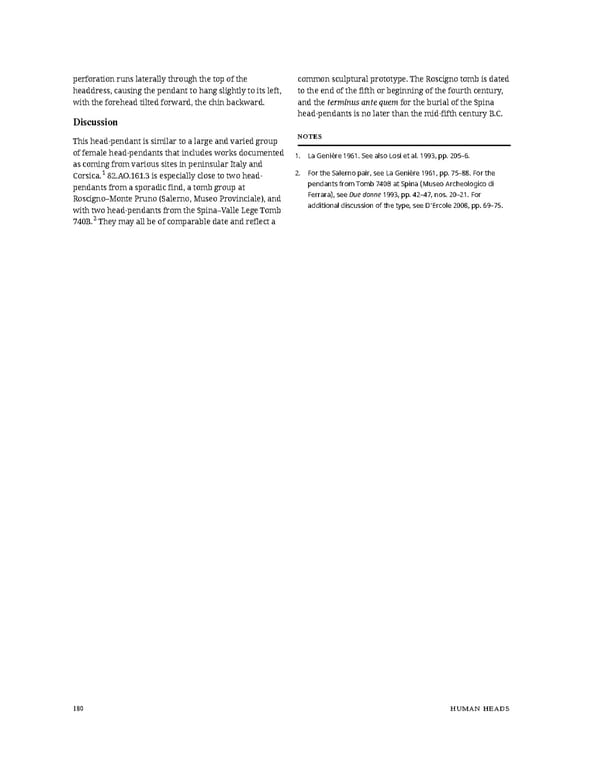perforation runs laterally through the top of the common sculptural prototype. The Roscigno tomb is dated headdress, causing the pendant to hang slightly to its left, to the end of the fifth or beginning of the fourth century, with the forehead tilted forward, the chin backward. and the terminus ante quem for the burial of the Spina Discussion head-pendants is no later than the mid-fifth century B.C. This head-pendant is similar to a large and varied group NOTES of female head-pendants that includes works documented 1. La Genière 1961. See also Losi et al. 1993, pp. 205–6. as coming from various sites in peninsular Italy and Corsica.1 82.AO.161.3 is especially close to two head- 2. For the Salerno pair, see La Genière 1961, pp. 75–88. For the pendants from a sporadic find, a tomb group at pendants from Tomb 740B at Spina (Museo Archeologico di Roscigno–Monte Pruno (Salerno, Museo Provinciale), and Ferrara), see Due donne 1993, pp. 42–47, nos. 20–21. For with two head-pendants from the Spina–Valle Lege Tomb additional discussion of the type, see D’Ercole 2008, pp. 69–75. 740B.2 They may all be of comparable date and reflect a 180 HUMAN HEADS
 Ancient Carved Ambers in the J. Paul Getty Museum Page 189 Page 191
Ancient Carved Ambers in the J. Paul Getty Museum Page 189 Page 191